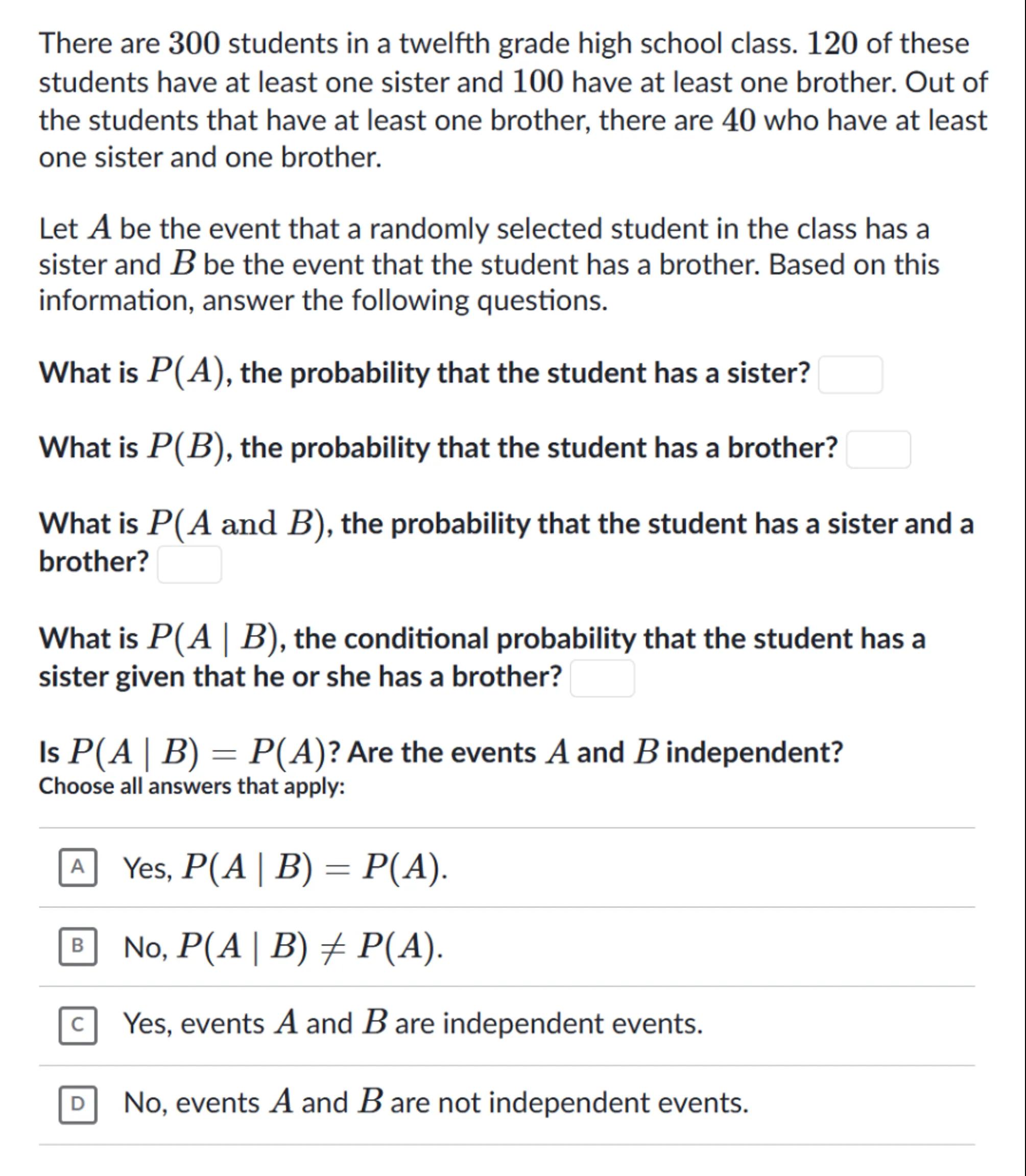
Sia

Question
Math
Posted 10 months ago
There are 300 students in a twelfth grade high school class. 120 of these students have at least one sister and 100 have at least one brother. Out of the students that have at least one brother, there are 40 who have at least one sister and one brother.
Let be the event that a randomly selected student in the class has a sister and be the event that the student has a brother. Based on this information, answer the following questions.
What is , the probability that the student has a sister?
What is , the probability that the student has a brother?
What is and , the probability that the student has a sister and a brother?
What is , the conditional probability that the student has a sister given that he or she has a brother?
Is ? Are the events and independent?
Choose all answers that apply:
A Yes, .
B No, .
c Yes, events and are independent events.
D No, events and are not independent events.

Answer from Sia
Posted 10 months ago
Solution by Steps
step 2
To find , the probability that a student has a brother, we use the number of students with at least one brother (100) and divide by the total number of students (300). Using the asksia-ll calculation:
step 3
To find , the probability that a student has both a sister and a brother, we use the number of students with at least one sister and one brother (40) and divide by the total number of students (300). Using the asksia-ll calculation:
step 4
To find , the conditional probability that a student has a sister given that they have a brother, we use the number of students with both a sister and a brother (40) and divide by the number of students with at least one brother (100). Using the asksia-ll calculation:
step 5
To determine if , we compare the probabilities from step 1 and step 4. Since both are , we have
step 6
To determine if events A and B are independent, we check if . Using the asksia-ll calculation: , which is equal to . Therefore, events A and B are independent
[1] Answer
A
[2] Answer
C
Key Concept
Independence of Events
Explanation
Two events A and B are independent if the occurrence of one does not affect the probability of the occurrence of the other, which can be mathematically expressed as .
Key Concept
Conditional Probability
Explanation
The conditional probability is the probability of event A occurring given that event B has occurred, and is calculated as . If , then events A and
Not the question you are looking for? Ask here!
Enter question by text
Enter question by image
Unlock Smarter Learning with AskSia Super!
Join Super, our all-in-one AI solution that can greatly improve your learning efficiency.
30% higher accuracy than GPT-4o
Entire learning journey support
The most student-friendly features
Study Other Question